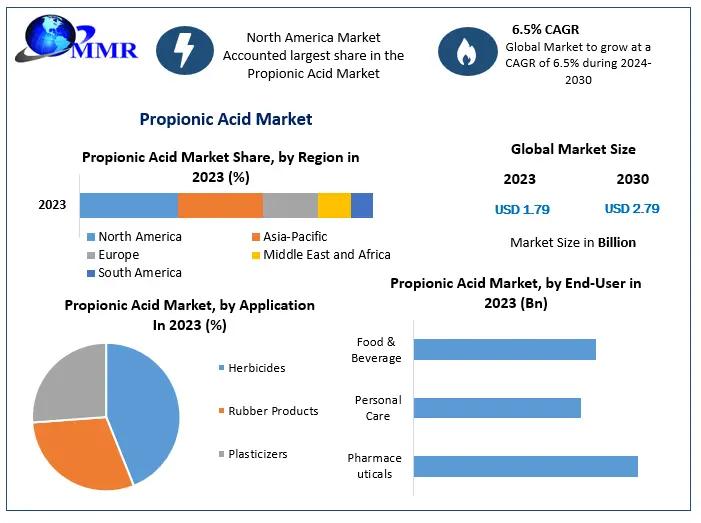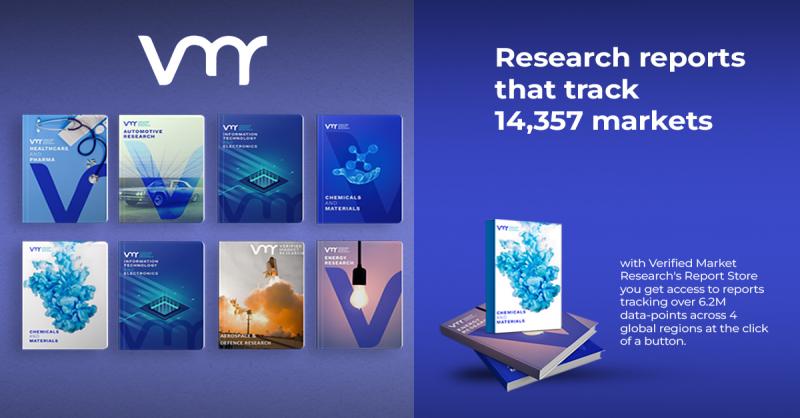Propionic Acid Market: £2.79 Billion Opportunity by 2030

The propionic acid market is experiencing robust growth, driven by increasing demand across several sectors, including food preservation, animal feed, and herbicide production. As consumers and industries alike prioritise food safety and extended shelf life, propionic acid is playing a crucial role as a preservative in food products.
Furthermore, the rising emphasis on sustainable agricultural practices is boosting the use of propionic acid in herbicides. This market expansion is further supported by advancements in manufacturing processes and the growing demand for animal feed, leading to a projected compound annual growth rate (CAGR) of 6.5% from 2024 to 2030.
In 2023, the global propionic acid market was valued at £1.79 billion. The market is expected to reach nearly £2.79 billion by 2030, signifying a substantial increase in market value.
Segmentation by Application
The propionic acid market can be segmented based on its diverse applications:
Herbicides: This segment held the largest revenue share in 2023 and is projected to continue dominating the market, growing at a CAGR of 3.5% through 2030. Propionic acid's versatility and ease of handling make it a popular herbicide across numerous industries. Its fine, granular nature allows for application in diverse situations. The increasing need to mitigate the detrimental effects of weeds on crop growth is driving demand for weed control solutions. Weeds compete for sunlight, nutrients, and water, significantly reducing crop yields. Propionic acid-based herbicides offer a solution, effectively controlling a wide range of weeds and enabling farmers to maximise crop production.
Rubber Products: Propionic acid is used in the production of rubber products, contributing to the market's overall growth.
Plasticizers: Propionic acid plays a vital role in the manufacture of plasticizers, impacting its market demand.
Food Preservatives: This application is witnessing significant growth as consumers demand longer shelf life and greater food safety. Propionic acid effectively inhibits the growth of mould and bacteria, extending the freshness and quality of food products.
Others: The market encompasses various other applications of propionic acid, further contributing to its overall growth.
Segmentation by End-User
The propionic acid market can also be segmented based on its end-user applications:
Pharmaceuticals: Propionic acid finds applications in the pharmaceutical industry, contributing to its market share.
Personal Care: The use of propionic acid in personal care products, such as cosmetics and toiletries, is steadily increasing.
Food & Beverage: This sector is a major driver of propionic acid demand, with its use as a preservative in food products becoming increasingly popular.
Agriculture: Propionic acid's application in herbicides and animal feed is boosting its demand in the agricultural sector.
Others: Various other end-users contribute to the propionic acid market's overall growth.
Regional Market Dynamics
The report analyses the propionic acid market across key regions, including:
Middle East
South America
Europe
Africa
Asia-Pacific
The report provides an in-depth understanding of the regional market dynamics, including import and export patterns, market sizes, and growth rates.
Market Scope and Methodology
The report adopts a comprehensive approach to analysing the propionic acid market, incorporating both SWOT and descriptive analysis. This strategy provides investors with valuable insights. The report's primary objective is to present a comprehensive overview of the market, utilising a combination of qualitative and quantitative research methods. Data is collected through various techniques, including surveys and questionnaires. Mathematical, statistical, and numerical methods are employed for data analysis.
The report examines future market prospects by analysing buyer-direct activities, R&D initiatives, innovative forms of development, cutting-edge industry techniques, and market consolidations and acquisitions. It further incorporates PESTLE analysis and SWOT analysis to identify microeconomic factors and market trends.
Key Market Players
The propionic acid market is dominated by several prominent players, including:
1. BASF SE
2. DowDuPont
3. Perstorp Orgnr
4. Eastman Chemical Company
5. Macco Organiques Inc.
6. Krishna Chemicals
7. A.M. Food Chemical Co., Ltd.
8. Merck KGaA
9. OXEA GmbH
10. Perstorp
11. Biomin Holdings GmbH.
12. DAICEL CORPORATION
13. Hawkins, Inc.
14. Corbion N.V.
15. Otto Chemie Pvt. Ltd.
16. Oman Oil Company SAOC
17. Celanese Corporation
Key Questions Answered in the Report
The report provides answers to crucial questions about the propionic acid market, including:
What is Propionic Acid?
What is the growth rate of the Propionic Acid market?
What factors are expected to drive the growth of the Propionic Acid market?
What are the different segments of the Propionic Acid market?
What growth strategies are players considering to enhance their presence in the Propionic Acid market?
What are the upcoming industry applications and trends for the Propionic Acid market?
What recent industry trends can be implemented to generate additional revenue streams for the Propionic Acid market?
What major challenges could the Propionic Acid market face in the future?
Which segments are covered in the Propionic Acid market?
Who are the leading companies in the Propionic Acid market, and what are their portfolios?
Who are the key players in the Propionic Acid market?
Conclusion
The propionic acid market is on a robust growth trajectory, driven by its diverse applications and increasing demand across various sectors. With a projected CAGR of 6.5% from 2024 to 2030, the market presents a significant opportunity for stakeholders. Continued innovation, expansion into new applications, and a focus on sustainability will further drive market growth in the coming years.





